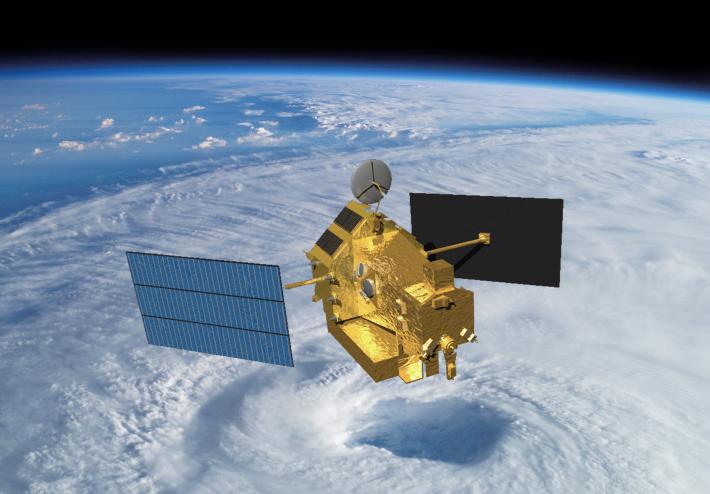
Artist's conception of the Tropical Rainfall Measuring Mission (TRMM): A NASA photo
WASHINGTON (PTI): A long-lived NASA satellite launched in 1997 to measure rainfall in the tropics has run out of fuel and has started its descent to Earth.
Pressure readings from the Tropical Rainfall Measuring Mission's (TRMM) fuel tank on July 8 indicated that the satellite was nearly at the end of its fuel supply, NASA said.
As a result, NASA has ceased manoeuvres to keep the satellite at its operating altitude of 402 kilometres. With its speed decreasing, TRMM has begun to drift downward.
A small amount of fuel remains to conduct debris avoidance manoeuvres to ensure the satellite remains safe.
TRMM's slow descent will continue over the next 2 to 3 years. It will continue to collect useful data as its orbit descends to about 350km over the next 18 months.
Once TRMM reaches an altitude of 150 to 120 kilometres, it will re-enter the atmosphere.
The TRMM satellite, a joint mission between NASA and the Japan Aerospace Exploration Agency (JAXA), was launched in 1997 to measure precipitation over the tropics, carrying the first precipitation radar into space.
"TRMM has met and exceeded its original goal of advancing our understanding of the distribution of tropical rainfall and its relation to the global water and energy cycles," said Scott Braun, the mission's project scientist at NASA's Goddard Space Flight Centre in Greenbelt, Maryland.
Its planned three-year mission has already lasted 17 years and provided researchers with an unprecedented data set that combined more traditional radiometer measurements with 3-dimensional radar scans across the tropical ocean and into the lower mid-latitudes.
Also unique to TRMM is its inclined orbit that allows it to cut across the paths of polar orbiting satellites and revisit locations at different times of day, which is important for understanding how rainfall evolves with the day/night cycle.
TRMM provided the first measurements of this type over the tropical ocean.
Scientists have used TRMM data to provide high quality climatology of rainfall, including variability on day/night, monthly, seasonal, and yearly time scales.
Scientists also use TRMM to study extreme convection and precipitation events including tropical cyclones, floods, landslides, and drought, the impact of humans on precipitation.
TRMM data have also allowed researchers to map lightning in many regions.
Some TRMM observations will continue as the spacecraft descends to 335 kilometres, at which time the satellite will be shut down, currently estimated to be February 2016.
After being shut down, TRMM has a 95 per cent probability of re-entering the atmosphere in a time window between May 2016 and November 2017. Its current projected re-entry date is around November 2016.
A gap in precipitation data coverage from satellites will not occur because NASA and JAXA launched TRMM's successor mission, the Global Precipitation Measurement (GPM) Core Observatory, on February 27 this year.
 Previous Article
Previous Article Next Article
Next Article










The Indian Air Force, in its flight trials evaluation report submitted before the Defence Ministry l..
view articleAn insight into the Medium Multi-Role Combat Aircraft competition...
view articleSky enthusiasts can now spot the International Space Station (ISS) commanded by Indian-American astr..
view article